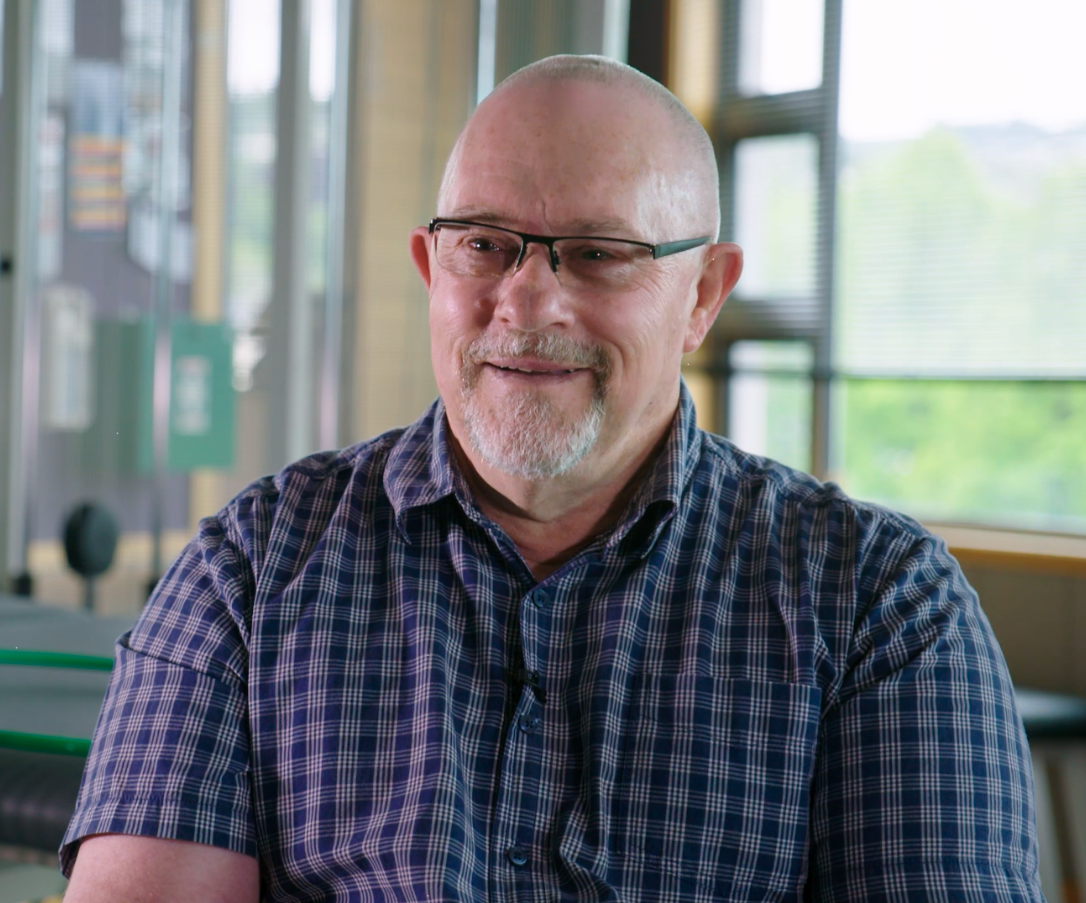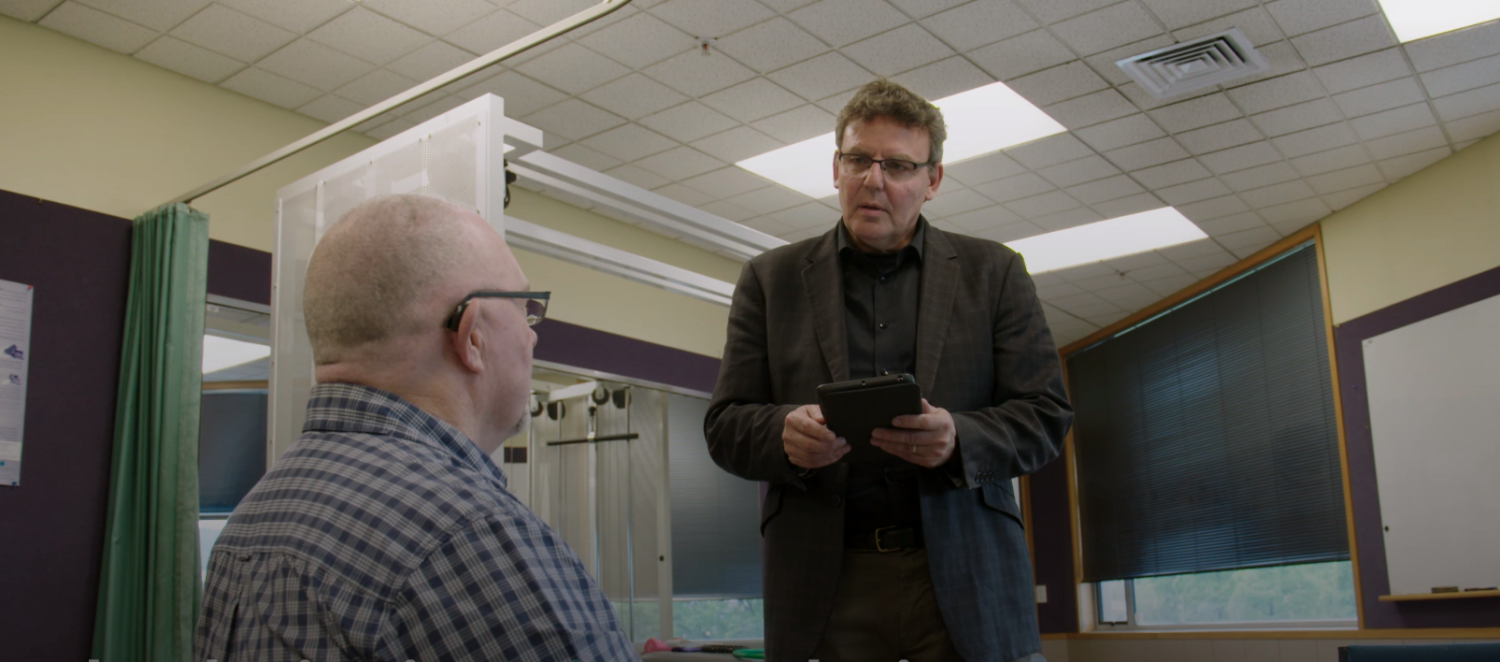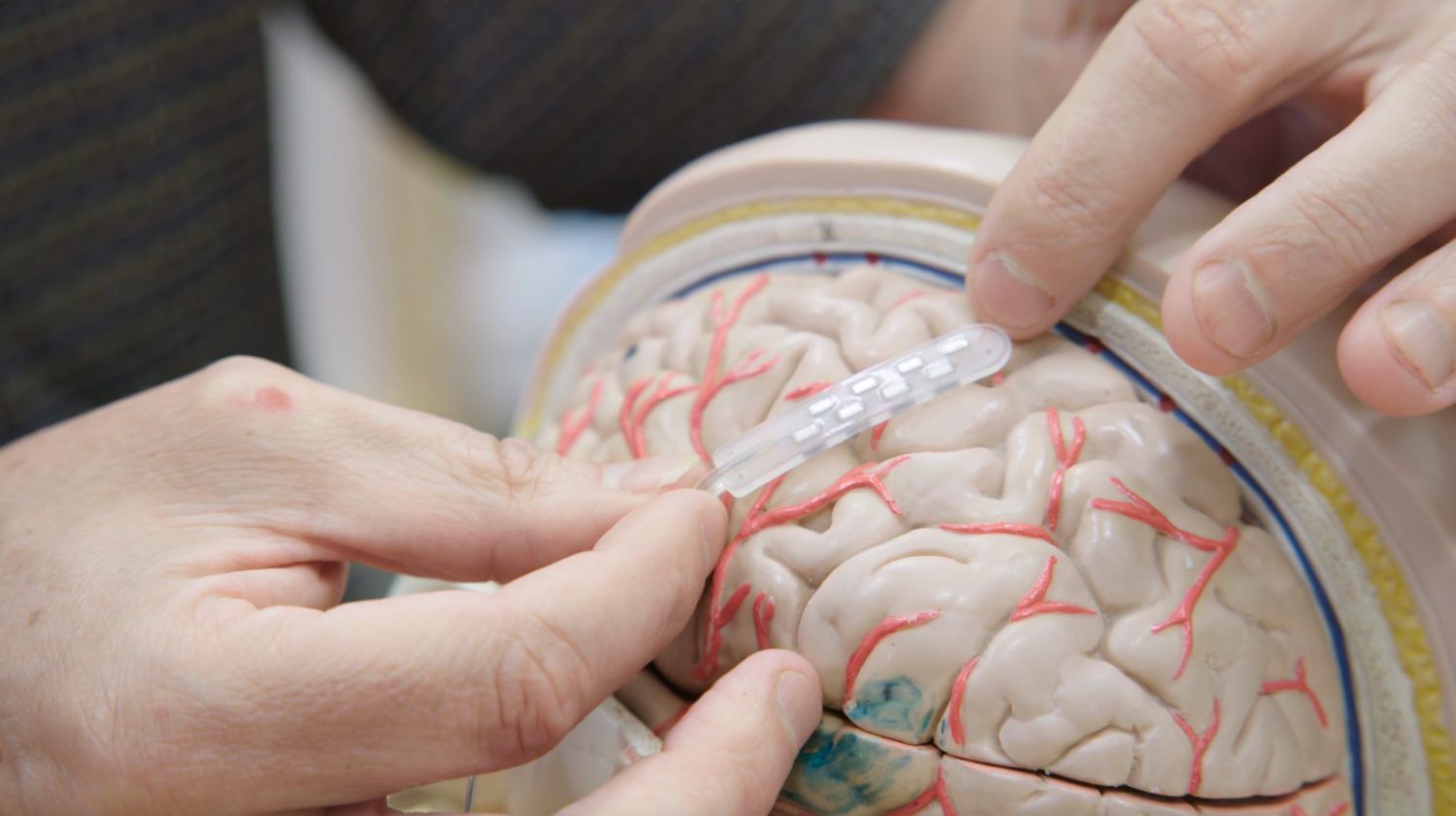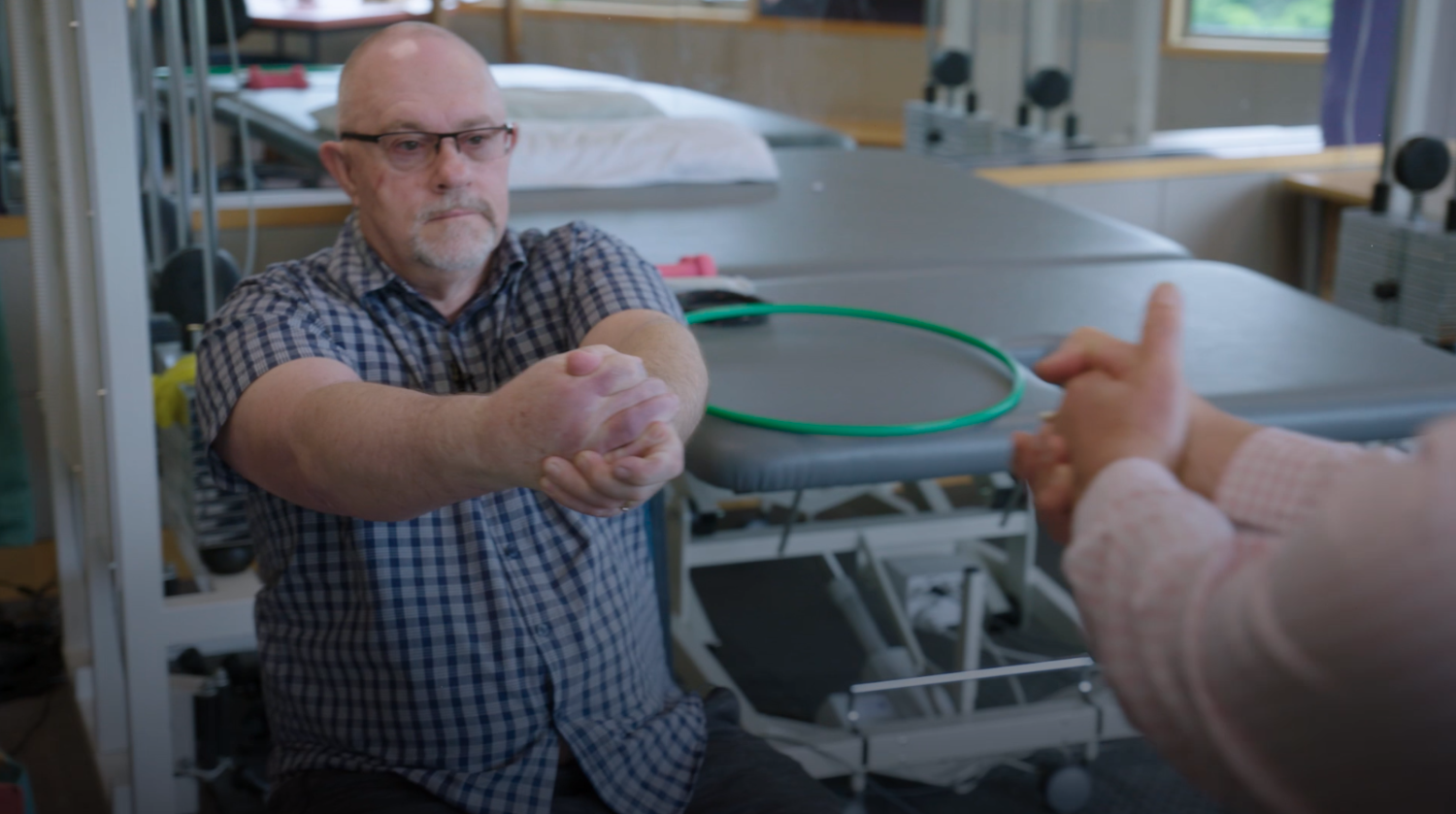Every hour of every day a New Zealander suffers a stroke. When not fatal — and strokes kill thousands of Kiwis annually, making them one of Aotearoa’s biggest killers — they can be debilitating. Stroke survivors often require months of rehabilitation.
Unfortunately, even with extensive rehabilitation, around a third of survivors never fully regain control over their bodies. That means that many of a stroke’s effects can last a lifetime, affecting a survivor’s independence. With the New Zealand Stroke Foundation estimating that there are 60,000 survivors in New Zealand, finding a way to enhance stroke rehabilitation, and thus ease the effects on function, would greatly improve many lives.
Now, in a world-first trial, Ageing Well Principal Investigator Professor John Reynolds has made promising strides in the right direction. Professor Reynolds, a neuroscientist at the University of Otago, has spent his career unravelling the mysteries of the human brain. Together with pioneering Belgian brain surgeon Professor Dirk de Ridder, Professor Reynolds has devised a novel stroke brain stimulation therapy that went against conventional scientific thinking.
Collaborating with pioneering Belgian brain surgeon Professor Dirk de Ridder, Professor Reynolds devised a novel stroke brain stimulation therapy that went against conventional scientific thinking.
Anatomy of a Stroke
Strokes are brain attacks. They are caused by an interruption of normal blood flow within the brain, which results in the death of brain cells in that area. The dead brain cells impair a person’s normal brain functions, and this can manifest in a drooped face, slurred speech, and arm incapacitation. How severe a stroke is depends on the area of the brain affected, and the type of cerebrovascular accident — to use the medical term for a stroke — experienced.
Conventional brain stimulation approaches made to improve stroke recovery had used a particular pattern of periodic bursting stimulation applied using electrical and magnetic stimulation on the diseased side of the brain, near the epicentre of the stroke. However, this approach has so far not produced a reliable degree of lasting improvement.
So instead, Professor Reynolds’ study targeted the healthy side of the brain using the bursting electrical stimulation usually applied to the damaged side. Based on work he had done with experimental stroke models, he suspected that, after the trauma of a stroke, this type of stimulation applied to the healthy side of the brain would reduce the ‘overdrive’ that was restricting recovery of the damaged part of the brain.
To maximise recovery, the surviving brain cells closest to the damaged area need to take over the lost function. Yet after a stroke, this is difficult to achieve due to the overactivity of the electrical circuits that tend to ‘turn off’ or inhibit these surviving areas. Using an electrical stimulator implanted onto the brain opposite the stroke, Professor Reynolds hoped that the diseased side of the brain could begin to “awaken” and maximise its ability to recover function through rehabilitation therapy.
One of the few neurosurgeons who could help — and the only one at the time with the ability to obtain the specific stimulation technology required — was Belgian brain surgeon, Professor Dirk de Ridder. Fortuitously, Professor de Ridder had recently moved to the University of Otago in Dunedin, and he had also been trying to treat the damaged side of stroke-affected brains without success.
“So when John Reynolds came up with this new idea to treat the healthy part of the brain in order to influence the diseased part, I thought it was a brilliant idea,” Professor de Ridder recalled.
Using an electrical stimulator implanted onto the brain opposite the stroke, Professor Reynolds hoped that the diseased side of the brain could begin to “awaken” and maximise its ability to recover function through rehabilitation therapy.
The novel implanted stimulation approach
With Ageing Well funding, the neuroscientist and the neurosurgeon developed a novel stimulation approach together. The researchers placed an electrode on the dura which covers the motor cortex (that controls body movement) on the healthy side of the brain, “to change the messages from the healthy side to the stroke side”, explains Professor de Ridder.
A wire is tunnelled under the skin to an implanted stimulator in the chest, similar to a pacemaker. This device is only activated during rehabilitation sessions, and by the standards of brain surgery, very safe. The new electrical stimulator has already begun to improve the life of Paul Robertson-Linch. Mr Robertson-Linch was one of two men who volunteered to trial the device. Several years ago he had a stroke at work, which initially robbed him of his speech and all movement down his right side.
“That was pretty scary,” Mr Robertson-Linch recalls, “I remember thinking is this going to be life now? Is this it?”. Despite undergoing extensive physiotherapy rehabilitation, he still could not use his right arm and hand. Sadly, this is an all too familiar story: around 85% of all stroke survivors never regain arm and hand movement.
But, as a result of the electrical stimulator, Mr Robertson-Linch started to make significant improvements. When Paul and his fellow trial participant started, they could not grip anything. By the end, they could squeeze 7kg weight with their hands. In the process, they had also regained fine motor skills, which were lost as a result of the stroke.
For Mr Robertson-Linch, the unconventional therapy has been life-changing. “I couldn’t hold my toothbrush when I came here. Now I can hold it and get it up to my face…I can open and close the door. It’s fantastic.”
Professor Reynolds is excited by the results and hopes that this trial is just the tip of an exciting new phase of stroke therapy treatments. He is now trialling electrical burst stimulation applied using a novel external stimulator system, to provide a therapy which is hopefully more acceptable to many more New Zealanders.

-- Mr Robertson-Linch
 "I couldn’t hold my toothbrush when I came here. Now I can hold it and get it up to my face…I can open and close the door. It’s fantastic.”
"I couldn’t hold my toothbrush when I came here. Now I can hold it and get it up to my face…I can open and close the door. It’s fantastic.”
Electrical stimulation, Professor Reynolds is quick to point out, is not the cure but rather a tool to achieving faster stroke recovery. The stimulator prevents the healthy brain from accidentally stifling its own recovery: “The stimulator doesn’t make them better – it’s the rehabilitation. What we are trying to do is to allow parts of the brain to wake up during that session and form new connections”.
Professor Reynolds cautions that neurostimulation will not replace traditional rehabilitation therapy, which remains the standard stroke treatment. But rather, neurostimulation will complement and dramatically enhance it. In the meantime, Professor Reynolds and his team will be looking to find a method that will “maximise the gains” that can be obtained from such promising therapies.
We are closer, then, to a future where neurostimulation can aid stroke recovery and improve the lives of many New Zealanders.



